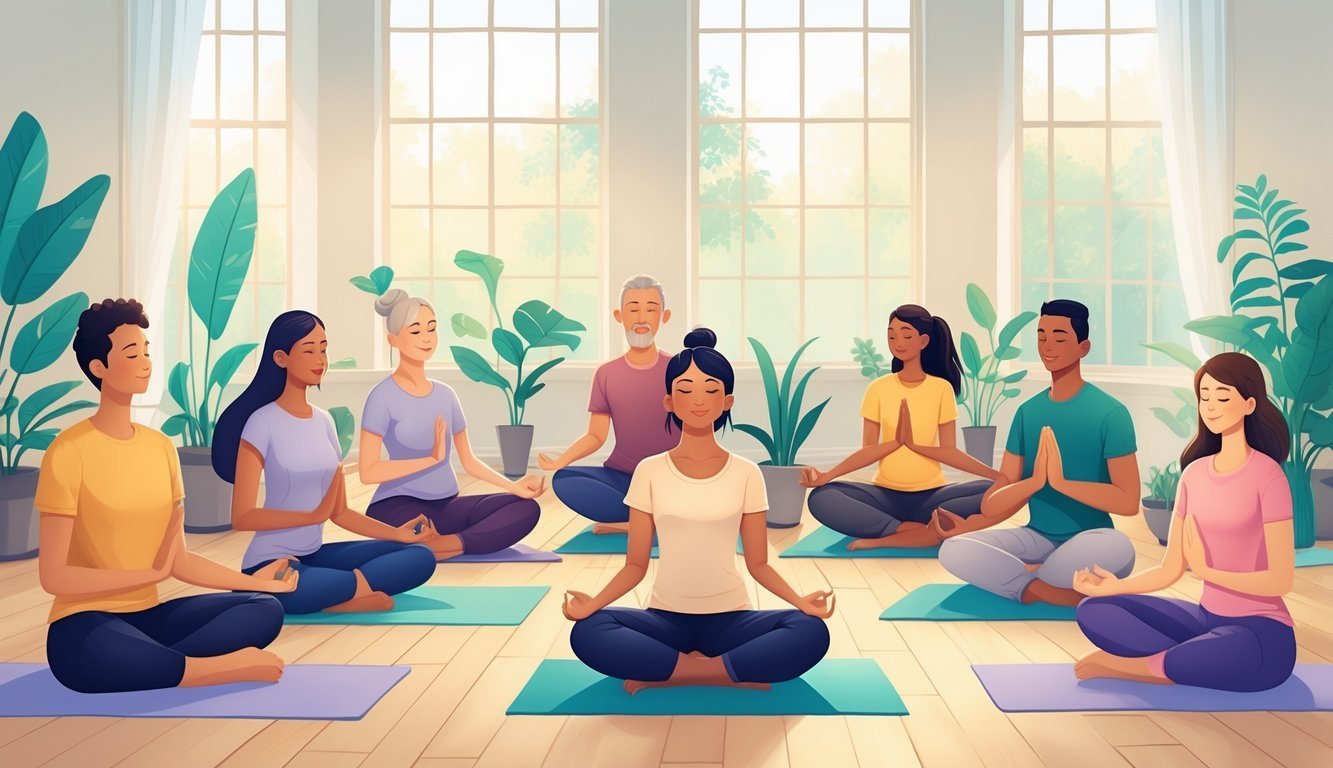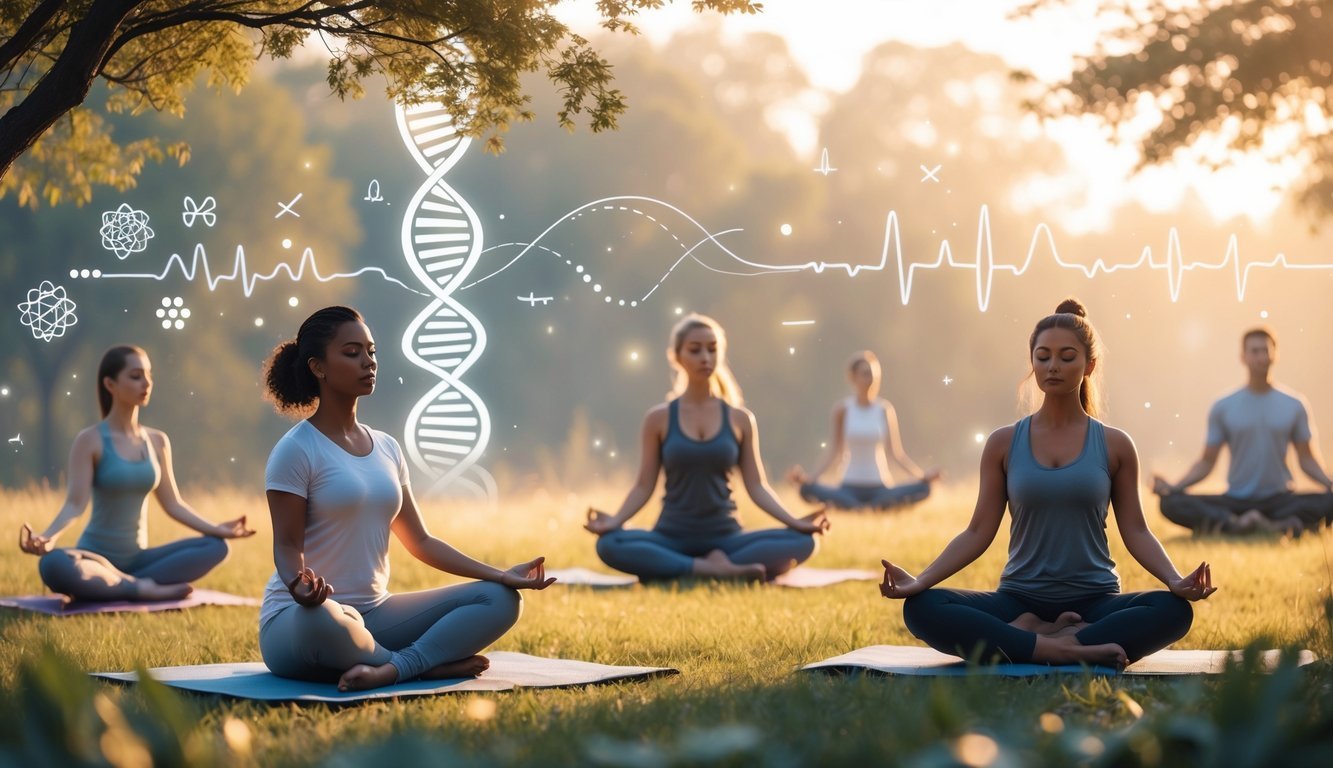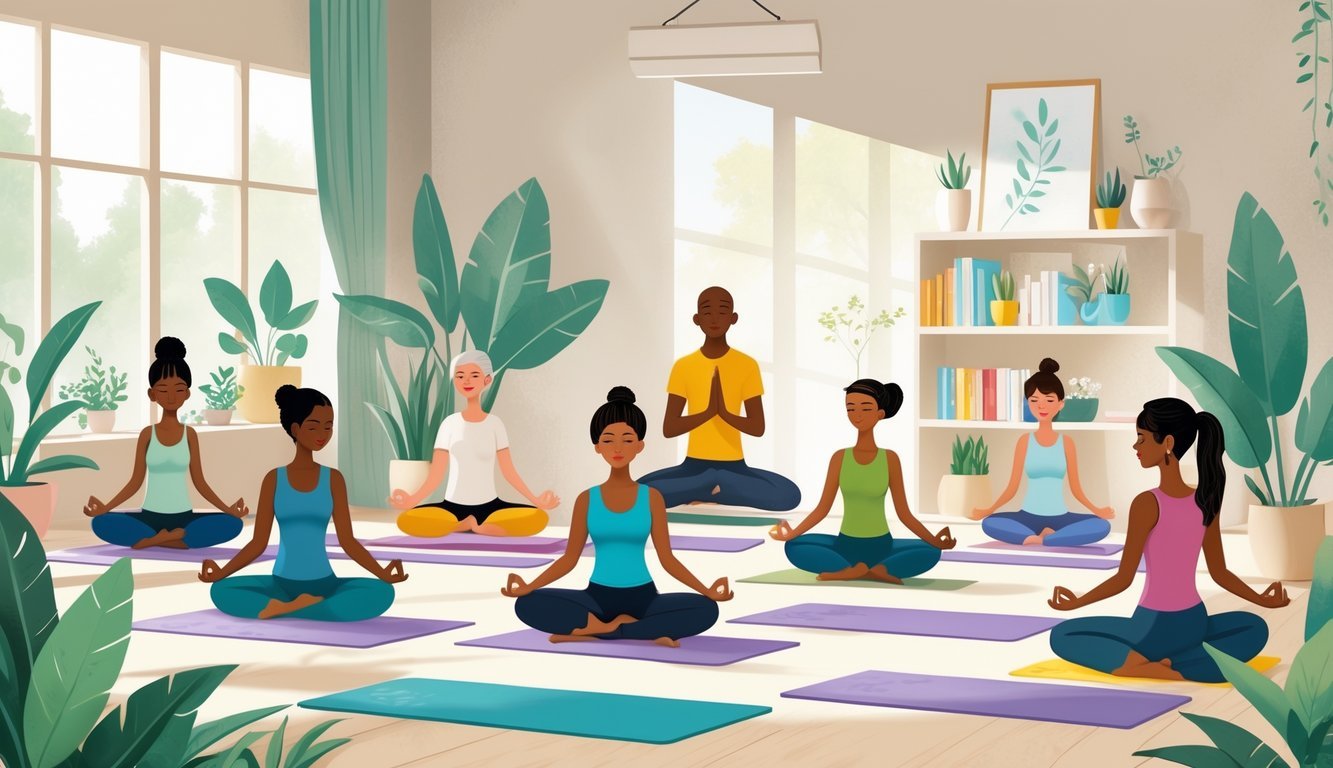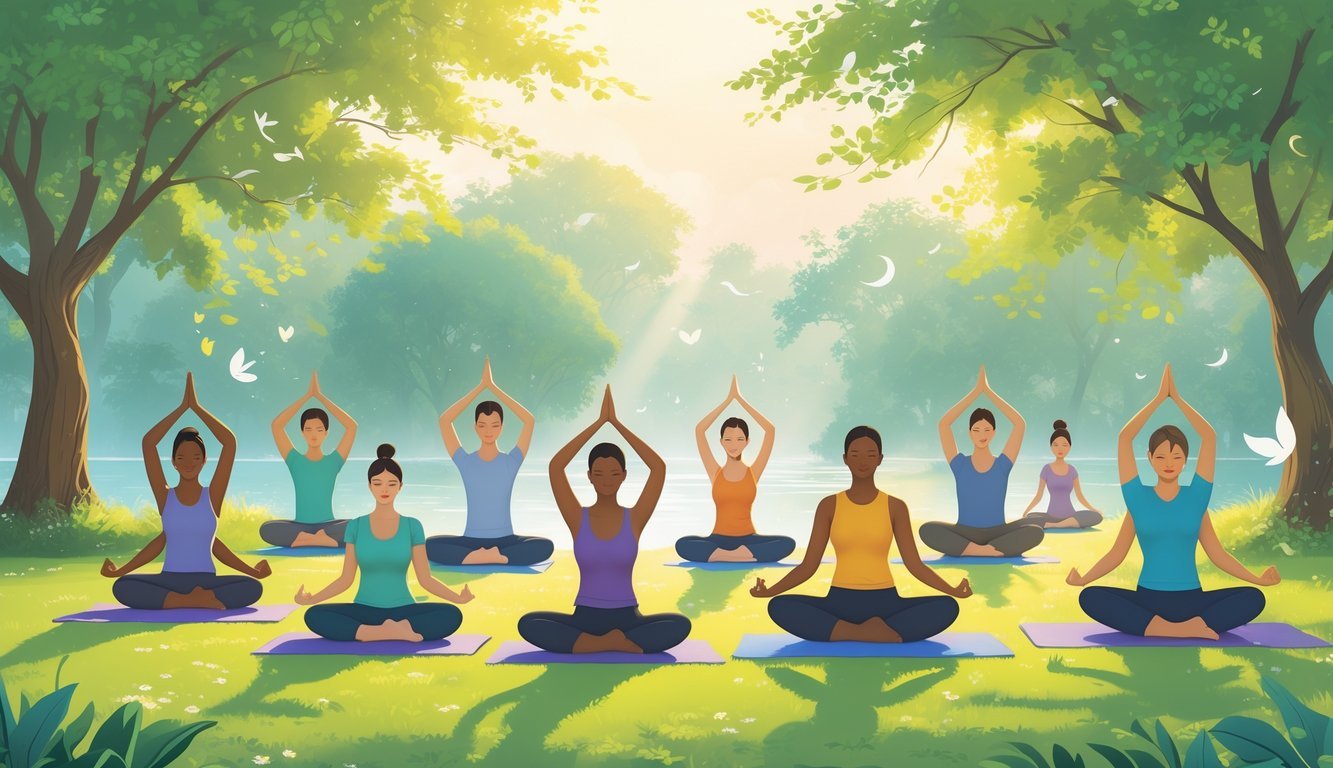PsychNewsDaily Publishers
100 Summit Drive
Burlington, MA, 01803
Telephone: (320) 349-2484
PsychNewsDaily Publishers
100 Summit Drive
Burlington, MA, 01803
Telephone: (320) 349-2484
Yoga effectively reduces anxiety, improves brain function, and enhances mental health through mindfulness, relaxation techniques, and physical postures while being accessible for all skill levels.

If you’ve been looking for ways to reduce anxiety, you might wonder if yoga actually helps. A recent study found that yoga can lower anxiety better than just learning about stress management. That means yoga could be a practical tool to calm your mind and help you feel better.
Yoga isn’t just about stretching. It can actually change your brain, making areas like the cerebral cortex thicker, which connects to better mental health.
Even practicing moderate yoga at home can reduce anxiety and improve memory. That’s pretty accessible and honestly, it’s nice knowing you don’t have to do anything fancy to get some benefits.
You don’t need to be a pro to start. Lots of different yoga styles can help manage anxiety in simple, natural ways.
If you’re curious about how yoga supports mental health, you’ll find the facts and research here.

Yoga helps your mind and body handle stress differently. It reduces negative emotions, lowers stress, and improves brain function linked to anxiety management.
Let’s look at what the evidence says about why yoga works and how it stacks up against other treatments.
Researchers have found that yoga helps people with generalized anxiety disorder (GAD) more than just stress education. For instance, studies show yoga lowers anxiety and makes emotional distress less overwhelming.
People who practice yoga regularly often have fewer anxiety symptoms and better mental health. These results tie back to changes in brain regions that control fear and emotion.
Yoga is affordable and easy to access, so it’s a solid option to try alongside other treatments for anxiety.
Yoga uses mindfulness to anchor your attention in the present. That alone can help cut down on worries and negative thinking.
Relaxation techniques in yoga, like muscle relaxation and deep breathing, slow your heart rate. They help your nervous system chill out.
Breathing practices in yoga teach you how to respond to stress. Deep, slow breaths calm physical symptoms like a racing heart or tense muscles.
Yoga can work as an alternative or a complement to treatments like cognitive behavioral therapy (CBT) or psychotherapy. CBT targets negative thoughts, while yoga focuses on calming your body’s stress response and emotions.
Some studies compare yoga to aerobic exercise and find that yoga might be better for reducing anxiety. It can boost focus and help you feel calmer, not just physically but mentally too.
You can mix yoga with other treatments for a more balanced approach. That way, you get tools for both your mind and body.

Different yoga styles can help reduce anxiety. Some focus on calming your mind, while others use movement or breathwork to ease stress.
Each style targets anxiety in its own way and brings unique benefits.
Kundalini yoga mixes breathing, chanting, and physical postures to help you manage anxiety. It’s known for activating your energy and bringing calm.
Research suggests Kundalini yoga can ease symptoms of generalized anxiety disorder. This style uses dynamic movements and breathwork, which help lower stress and promote relaxation.
It also includes meditation and chanting, so you can focus and unwind deeply. People sometimes sweat during class, which just means your body’s working to let go of tension.
Kundalini yoga blends physical effort and mental focus. If you want something more active than just sitting still, you might like this style.
Meditation and mindfulness are big parts of yoga that help you stay present. These techniques calm your overactive nervous system, which often drives anxiety.
When you practice mindfulness, you learn to notice your thoughts without judging them. This can lower stress and make worry or fear feel less overwhelming.
Meditation helps your brain stay calmer, so you handle anxiety and depression better. You don’t need fancy moves—just focus on your breath or simple awareness.
A lot of people combine meditation with yoga poses for a balanced, stress-busting routine.
Yoga poses, or “asanas,” are the active side of yoga. Moving through these stretches can ease anxiety by relaxing your muscles and lowering stress hormones.
Regular practice often leads to healthier habits, like better sleep, more exercise, and mindful eating.
Some poses get your heart pumping and make you sweat, which can clear your mind and lift your mood. Pairing these with breathing and relaxation techniques gives you a well-rounded way to manage anxiety and boost your overall health.

Yoga can lift your mood, relax your mind, and ease anxiety or panic. It works through specific breathing techniques and gentle poses that help your body unwind.
You’ll usually feel more relaxed and less stressed. Yoga can ease anxiety and depression, and it often helps you sleep better by calming your nervous system.
Yes, yoga can help lower how often panic attacks happen and how intense they feel. It teaches you to control your breath and be mindful, which can stop panic from spiraling.
Kundalini yoga stands out for easing anxiety and depression. It combines breathwork, postures, and meditation to lift your mood and reduce stress.
Yoga slows your breathing and heart rate. That shift helps your body move out of fight-or-flight and into a relaxed state.
The poses also help release muscle tension.
Yes, quite a few studies show yoga lowers anxiety symptoms more than some standard stress education. Research also backs up its benefits for sleep and quality of life.
Try gentle poses like child’s pose or legs-up-the-wall. Cat-cow stretches can also help.
Pair these movements with deep breathing. Sometimes, guided meditation works wonders to calm your mind and body when anxiety hits.